Ampelmann, C-Job Develop Motion-compensated Feeder Vessel for U.S. Offshore Wind Sector
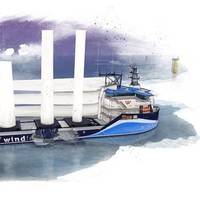
Dutch offshore gangway services firm Ampelmann and C-Job Naval Architects have teamed up to develop what they say is "a one-of-a-kind" offshore wind feeder vessel concept with motion compensation technology.According to the duo, the vessel would be specifically suited for the rigorous demands of operating off the U.S. east coast.The concept design combines the knowledge of Ampelmann, the Dutch offshore access provider, and independent ship design company C-Job Naval Architects.
19m Fisheries Patrol Boat Launched
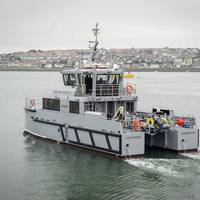
Incat Crowther announced the launch of Lady Megan, a 19m Catamaran Fisheries Patrol Vessel. Built by Mainstay Marine for the Welsh Government, Lady Megan is designed to be a robust and versatile vessel that packs immense functionality into its modest platform and is designed to operate year round in the Irish Sea.The aft working deck of Lady Megan is the epicenter of this functionality, featuring a hydraulically operated tender launch and recovery system, capable of launching and retrieving a 5m RIB while the vessel is in motion in Sea State 3.
Tech Talk: GHS Adds 'Seakeeping'
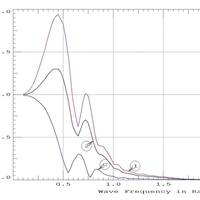
General HydroStatics is no longer just about hydrostatics, and will soon offer capabilities in the world of hydrodynamics with the introduction of a long awaited addition to the GHS product family: an optional seakeeping module. Adding a seakeeping module means run files may now include seakeeping capabilities by adding a couple new commands and existing geometry files (.GF) can be used for the seakeeping analysis with little or no modification. Integration with GHS also reduces required user input, getting answers faster while increasing user control.
USCG: Remain Upright by Fully Understanding Vessel Stability
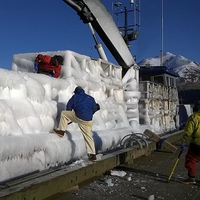
This Safety Alert addresses concerns related to vessel stability and watertight integrity. Recently, a marine casualty involving a fishing vessel in the Bering Sea resulted in multiple fatalities and complete loss of the vessel. A Marine Board of Investigation is currently analyzing the various circumstances surrounding the casualty. Although the investigation is not complete, testimony and fact finding indicate that vessel owners, operators, and crews should give special consideration to vessel stability concerns.
Canada Investigating Leviathan II Sinking

Canada’s Transportation Safety Board (TSB) continues its investigation into the sinking of passenger vessel which killed at least five near Tofino, British Columbia, Sunday. Of the 24 passengers and three crew aboard the whale-watching tour boat Leviathan II at the time of the sinking, 21 people were rescued, five have died and one remains missing. Leviathan II is a three-deck cruiser operated by Jamie's Whaling Station and Adventure Centres. The boat, which has capacity for up to 46 people…
Liebherr Wins Significant Ship Crane Order

Liebherr reports that there has been a positive trend in the heavy lift crane segement, a sentiment confirmed by a number of significant contracts recorded of late, including a contract for the delivery of six heavy lift ship cranes for the German shipping company Rickmers. Four of the heavy lift cranes are type CBB 4700 with a lifting capacity of 450 tons and the remaining two are type CBB 3450 with a lifting capacity of 120 tons. The six heavy lift cranes are being built by Liebherr-MCCtec Rostock GmbH and will be delivered in 2014.
Industrial Strength Patrol Boat
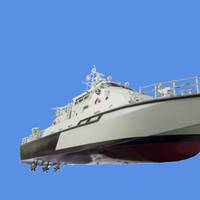
At a time when the nations of the world are struggling to provide marine security in an era of fiscal responsibility, Thailand’s Marsun Company Ltd. has come up with an industrial strength response. The shipyard’s 36-meter crew boat design is a well-proven vessel that typically spends 30 days at sea and returns to port only for crew change. The crew boat can do this year round due to a very robust build with equally robust components. Down time is lost revenue for a commercial vessel.
The Center(s) of Expertise

U.S. Coast Guard's Safety Strategy Incorporates Tightly Focused Training at Carefully Chosen Venues. The U.S. Coast Guard opened seven National Centers of Expertise in 2009, locating three alone on the busy Gulf Coast, The concept of national centers of expertise – or “centers of excellence” – dates back to the 1960s when technology became more advanced and required new skill sets. The U.S. Army, Navy, Air Force and Marine Corps all operate such hubs, as do federal agencies, foreign governments and industries ranging from manufacturing to health care.
How to Start A Towing Vessel NCOE
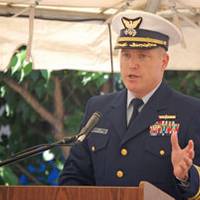
Last summer, USCG Commander Gregory Case was charged with transforming the Coast Guard’s Towing Vessel National Center of Expertise (TVNCOE) from a plan on paper to a brick and mortar reality. The center is one of seven National Centers of Expertise, and is charged with training towing vessel examiners and inspectors, being a repository of towing vessel expertise and forming and strengthening partnerships with industry. In May 2010 the center was officially opened in Paducah, Kentucky.
Jobs at CG Centers of Expertise
The Coast Guard announced the opening of the first installment of civilian Vacancy Announcements for the five new National Centers of Expertise (NCOE). These will be GS-12 and GS-13 positions. The centers will have four to a maximum of nine inspectors/ investigators attached; only two to three CG mildet. The center employees are marine inspectors or investigators fully engaged in their primary inspections / investigations assignments who will also train student inspectors, advise policy-makers, regulation developers or operational program managers on trends, best practices, leading indicators, problematic issues or other functional area concerns.
MOL Establishes New Panama Vessel Operation Center
MOL hosted a party to celebrate the grand opening of its new Panama Vessel Operation Center in Panama City, Panama on December 9, 2003. Some of the guests in attendance included: Mr. Joaquin Jacome, Minister of Commerce; Mr. Jerry Salazar, Minister of Canal Affairs; and Mr. Shuji Shimokoji, Ambassador of Japan. Considering Panama to be one of the world’s key maritime centers, the company established MOL (Panama) Inc. in May 2003, which is responsible for handling all commercial activities for MOL’s liner division in Panama. The responsibilities of MOL (Panama) Inc. were increased last month when it was named a regional office in charge of managing the activities of MOL’s Caribbean and Central America shipping agents.
Marine Training Via Simulation: As Real as it Gets
The abandonment of the concept of controlled simulation environment, as per the National Research Council's endorsed simulation classification scheme, would constitute a significant step backwards for the quality and effectiveness of maritime training . Now is the time to re-evaluate the proper role of CBT in training, and, in the process, re-visit training competency and learning proficiency support provided by all simulationtechnologies. Realism, Why Bother? Here is a perspective regarding realism in simulation. A simulation student was complaining to his company office that the simulator he was working on that day was not very realistic. He went on to say that the ship drove too easily, the visual picture was phony, and that the some of the bridge gear was not real equipment.





